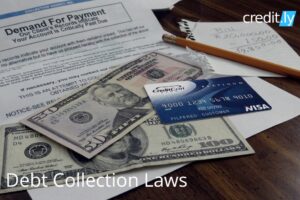The Ultimate Mortgage Glossary. Buying a house is a great way to plant roots, and a first step to financial growth. If you’re looking to buy a home, the first thing you’ll want to do is check your credit, since it’s going to play a huge role in your ability to get a mortgage. The next thing you’ll want to do is prepare for a whole lot of jargon. The home-buying process is complicated, to say the least. There a plenty of steps between pre-approval and closing and you’ll want to understand all the mortgage terms sure to be thrown your way in between. That’s why we’ve put together this handy mortgage glossary. Feel free to refer to it every time the realtor-broker-appraiser-speak starts sounding like straight-up gibberish.
As for the credit part, well, we can help with that, too. Our free credit report snapshot will show you two of your credit scores, plus insights on what you can do to improve your standing ahead of the house hunt.
Now, without further a do, here’s our Mortgage 101 Glossary Index.
A
Appraisal: An opinion of a home’s value as of a given date of a property prepared by an expert. The experts are usually licensed in the state.
Appreciation: The increase in a property’s value over time.
ARM (Adjustable-Rate Mortgage): A mortgage in which rate changes according to a formula specified in the loan document.
Automated Underwriting: A computerized system that preliminarily determines a borrower’s loan eligibility based on a predetermined set of financial criteria.
B
Bottom-line Price: The highest price you would be willing to pay for a property. Unless you are making a “take it or leave it” offer, you would initially offer a price lower than your bottom-line price and negotiate your way upward. Obviously, you never let a seller know your bottom-line price.
Buyer’s Agent (also the Selling Agent): This real estate agent who works on behalf of a buyer by researching homes and neighborhoods and drawing up offers and contracts. Ask your agent to draw up a Buyer’s Broker Representation Agreement.
Buyer’s Broker Representation Agreement: A written agreement that stipulates a buyer’s agent will work only on behalf of the buyer.
C
Capital: Wealth or assets used to stimulate production of additional assets.
Cash Flow: In a rental property owned by an investor, this refers to the amount of money a property generates after expenses are accounted for.
Casualty Insurance (also Homeowners insurance, Fire insurance or Hazard insurance): A policy which protects the homeowner against damages to their property caused by fire and other common hazards. Liability insurance, which protects homeowners in case someone is injured on their property, is also included. Most policies are “full replacement cost,” which guarantees sufficient funds to rebuild the home. Full replacement cost is usually determined based on a home’s last appraised value less the cost of the land. In order to protect lenders’ interests, they are typically named on casualty insurance plans as additional insured parties.
Certified Public Accountant (CPA): A CPA is an accountant who has passed a state examination and other requirements necessary to be a practicing professional. There are excellent tax preparers who are not CPAs.
Closing Costs: The miscellaneous costs associated with closing. These typically include a Loan Origination Fee and Discount Points, Appraisal Fee, other Lender Fees, Escrow and Title Fees, and the first year’s Insurance Premium.
Comparables: Properties that are similarly sized and have similar features to a subject property. By reviewing comparable properties, buyers and their agents can get an idea of a property’s market value.
Comparative Market Analyses: Conducted by a real estate agent, this assessment of a property’s value is used to determine a reasonable offering price.
Condominium: In general, a higher density type of development in which a resident owns one of many units along with a share of the ground and other common amenities, like a swimming pool. The units are generally attached (unlike traditional single-family detached homes).
Condo Association: A condo association is a governing body that consists of individual condominium unit owners and that makes decisions regarding the maintenance of a condominium building and its grounds.
Counter-offer: In a real estate negotiation, a counter-offer is typically a response by the seller to the buyer’s initial offer. It is usually lower than the initial listing price and higher than the buyer’s offer.
Credit: Money that is available for the sake of a loan.
Credit Bureaus: Private companies that collect and maintain individuals’ credit histories, which they provide to creditors for a fee. The three major credit bureaus are Equifax, Experian and TransUnion.
Credit Markets: Just as there is a stock market, there is a market where fixed-income securities are traded. Among these are mortgage-backed securities, pools of mortgages that are sold to investors, such as pension plans and hedge funds.
Credit Report: Produced by credit reporting agencies, this reveals the borrower’s history and current status of obligations. You’re entitled to one free credit report from each bureau every 12 months. You can request these reports at AnnualCreditReport.com.
D
Deed: In many states, the word mortgage is used but the security instrument whereby the property is given as security for the loan is actually a Deed of Trust. There are three parties to the instrument: the Trustor, the borrower, the Trustee, and the Beneficiary, the lender. The borrower transfers the legal title for the property to the trustee who holds the property in trust as security for the payment of the debt to the lender or beneficiary. In the event of default, the beneficiary notifies the Trustee of the default whereupon the trustee proceeds to sell the property at a public sale. This is really a “paper function” as the Trustee will actually play no role. In most states a lender seeks a non-judicial foreclosure where the proceeds of the sale less the costs are the lender’s revenue to apply against the loan. If the proceeds from the sale are not sufficient to pay off the loan, the lender may not pursue other legal action to collect the deficiency. In some states, but not all, a lender must seek a judicial foreclosure to recover the full amount owed.
Dual Agency: When a buyer’s agent concurrently represents the interests of a seller. Dual agency is generally not recommended.
E
Earnest Money: The deposit money given by the buyer to his agent or settlement agent upon the signing of the Offer to Purchase (alternately known in some regions as the Deposit Receipt). This shows that the buyer is serious about buying the house. If the sale goes through, the earnest money is applied against the down payment. If a contract to purchase is not agreed upon, it is returned to the buyer. If a contract is agreed upon but the sale is not consummated, disposition of the earnest money, either forfeited to the seller or returned to the buyer is dependent upon what is agreed to in the Purchase Contract.
Escrow: In California and some other states, the settlement agent who handles the closing of a purchase transaction is an Escrow Company. In other states, settlement agents may be the escrow division of a title company or an attorney.
Escrow accounts (also Impound Accounts): Lender-established accounts through which a borrower makes payments and a lender takes deductions to cover the costs of the following: mortgage insurance premiums, property tax payments, and/or casualty insurance premiums. Escrow accounts are customary in the East, especially where the LTV of an original loan exceeds 80%. In these situations, borrow equity is not high and if foreclosure became necessary, the lender would not want to recoup the cost of back taxes payment.
Escrow Officer: After an offer is made, an escrow officer (or a representative of an attorney’s office) facilitates the transaction from the time the contract is signed through the close of escrow. These include inspections, earnest money agreements, disclosures, lender issues, and title and escrow issues. This is different from an escrow coordinator attached to a real estate broker’s office — a person whose services you should not pay for.
Federal Reserve (also “The Fed”): The central bank of the United States government. The Federal Reserve is responsible for setting short-term interest rates that serve as models for many types of loans. Mortgage rates, however, are influenced by the market rates on long-term securities like the 10-year Treasury Bond, which is only loosely affected by the Fed.
F
FICO: Created by the Fair Isaac and Co., this mathematical scoring system is the major credit scoring model used to assess the relative risk of an individual borrower.
Fixed-Rate Loan: A loan in which the interest rate doesn’t fluctuate but rather remains consistent for the life of the loan.
Foreclosure: The legal process by which a lender enforces payment of a debt secured by a mortgage, or deed of trust. During a foreclosure, the lender takes possession of the home, evicts the mortgagor, and sells the mortgaged property. If the sales price is not enough to pay off the loan, the lender may have other remedies dependent upon state laws, which vary from state to state.
For Sale By Owner Properties: Properties that are sold directly by owners rather than through a brokerage firm. You can use a broker to help you but you, not the seller, are responsible for the agent’s commission.
G
Good Faith Estimate: Provided by a mortgage lender or broker, this is a list of estimated fees and costs associated with a home loan. Your lender must, by law, give you this and other disclosures within 3 days of your application.
H
Home Protection Warranty Package: A service contract paid by the seller that covers breakdowns in heating, plumbing, air conditioning or electrical systems, usually within the first year of ownership.
I
Interest: The price paid for borrowing money.
Interest-Only Loan: A loan that requires a borrower to pay back interest only for a set number of years. After the interest-only period has expired, the remaining principal is typically amortized over the remainder of the life of the loan.
Interest Rate: The rate, which fluctuates according to various economic forces, that is the measure of the price at which money can be borrowed.
Interest Rate Lock: An assurance from a lender that an interest rate will not rise between the time a borrower locks in the terms of the loan and the time the loan closes.
L
Lien: A claim by one person or entity on the property of another. Commonly, this is security for money owed, created by the lender when you buy a property. Liens also include obligations not met or satisfied, judgments, unpaid taxes, materials, or labor.
Liquidity: The percentage of assets that can be quickly turned into cash. Liquidity is also a measure of the funds available for down payment, closing costs, and reserves.
Listing Agent: The agent who represents the interests of the seller.
Lock Period: Either 15, 30, 45, or 60 days, lock periods are set amounts of time during which the interest rates buyers have been promised cannot be made any higher.
Lot Number: The number corresponding to a parcel of land meant to be owned by a particular individual.
Loan-to-Value (LTV): A ratio that expresses the amount of a first mortgage lien as a percentage of a property’s total appraised value. For example, if a borrower wants $100,000 to buy a home worth $120,000, the LTV ratio is $100,000/$120,000 or 83%.
M
Mortgage: A lien or claim against real property given by the buyer to the lender as security for money borrowed.
Mortgage Loan Officer: A representative of a lending institution who acts as an intermediary between the institution and the borrower.
Multiple Listing Service: A group of private databases that provides real estate brokers with a comprehensive look at available housing in a particular market or across markets. The information, which used to be guarded, is now available at numerous websites.
N
National Association of Realtors: A trade organization consisting of a membership of more than 700,000 Realtors.
Negative Amortization: A method of loan repayment in which the borrower does not pay back the full amount of interest owed each month. The portion of interest that remains unpaid is added to the total amount owed to the lender.
P
Piggyback Transaction: Typically utilized by borrowers who wish to avoid paying private mortgage insurance (generally a requirement when a person makes a down payment of less than 20%), piggyback transactions or 80-10-10 mortgages as they are alternately called, are transactions by which two separate mortgages are originated at once. The first position lien has an 80% loan-to-value ratio and the second position lien has a 10% loan-to-value ratio. The remaining 10% is accounted for in the form of a down payment.
Points: A point is 1% of the amount of the loan. On a $50,000, one point is $500 while on a $200,000 loan, one point is $2,000. When a borrower pays points, this first includes the Loan Origination Fee. Additional points are called “discount points” and are an off-set against interest rate. Lenders will, these days, almost always offer a number of “rate versus fee” combinations allowing the borrower to choose one which is most suitable for his circumstance.
Pre-approval: A commitment from a lender stipulating how much money a person may borrow and under what terms and conditions.
Preliminary Title Report: Once escrow is opened, a preliminary title report is issued. This report provides buyers with information on a property’s title and whether there are any easements, liens and encumbrances on a particular property.
Pre-qualification: An informal, but not binding assessment of how much money a person could potentially borrow from a lender. Pre-qualification is an opinion rather than a promise, and is thus different from pre-approval.
Principal: The balance of the loan outstanding. This is the amount upon which the interest payment is computed.
Private Mortgage Insurance: A form of insurance that lenders generally require when borrowers make down payments that are less than 20%; in other words, when their loan-to-value (LTV) percentage is greater than 80%.
Property Insurance (Fire Insurance): Insurance policy intended to cover risks including fire, theft and some weather damage. Also called Fire Insurance or Casualty Insurance.
Prorate: This refers to an adjustment made on a payment to account for unused service so that buyer and seller each pay their respective share of costs in proportion to the time in which they own the property.
R
Rate-vs-Fee: An inverse relationship exists between a mortgage interest rate and the upfront fees paid. When borrowers opt to pay more upfront, the lower the interest rate becomes. It is much better to buy down the rate if you are going to be in a home for more than five years.
Real Estate Agent: A state-licensed professional who negotiates the sale of real estate, typically on behalf of its owner. A buyer’s agent represents the buyer in a real estate transaction.
Real-Estate Owned (REO): A term referring to properties owned by banks as the result of a foreclosure.
Realtor: A real estate broker or agent who is affiliated with the National Association of Realtors. (Trying to find a good realtor? These tips can help.)
Reserve Account: Reserves set aside by a condo association to cover anticipated maintenance and other expenses.
Reserve Analysis: Typically initiated by the board of a condo association, a reserve analysis studies every single item in the common area — from the roof to the paving in the parking lot, to make sure that adequate reserve funds are being established for their eventual replacement.
Reserves: This refers to the amount of liquid assets that a borrower has after paying the down payment and closing costs.
Return on Investment (ROI): The amount of profit a property generates divided by its value. A $100,000 property that generates $8,000 per year would produce an 8% ROI.
Risk: In terms of credit, risk refers to the likelihood of a borrower being able to make payments in a timely fashion and, ultimately, to pay off a loan. Naturally, lenders prefer low-risk borrowers to those who pose a high risk. Lenders determine risk by reviewing a person’s credit score and credit history.
Risk-Based Pricing: The higher the perceived risk, the higher the interest rate the borrower will pay.
S
Single-Family Residence: Unlike a condominium, in which certain areas are shared between individual homeowners, a SFR is a private unit intended for occupancy by a single family.
Subprime: Refers to loans offered to high-risk individuals (with low down payments and/or bad credit scores) and thus carry the highest interest rates. You may want to consider getting help in repairing your credit.
T
Termite Report: A report issued by a licensed state inspector that reports termite infestation and dry rot and any damage that resulted. The report will list corrective action and the cost of repairing damage to a home.
Tract Number: Refers to a subdivision of land as it is identified by the U.S. census. Tracts can range anywhere from 2,500 to 8,000 inhabitants.
U
Uniform Standards of Appraisal Practice: Designated by the Appraisal Foundation, these guidelines are intended to facilitate equitable appraisal practices.
Y
Yield Curve: A yield curve is the representation of the relationship between an interest rate and the time to maturity of a debt. The shape at any given time will determine the difference between long-term loans like a 30-year fixed-rate loan and, say, a 5/1 ARM.
Creditly is here to help. Learn more about credit, mortgages and credit tips for free at Creditly Resources Page.
[/et_pb_text][/et_pb_column][/et_pb_row][/et_pb_section]









